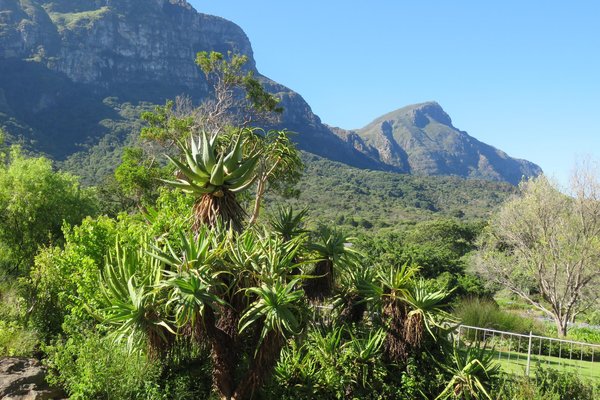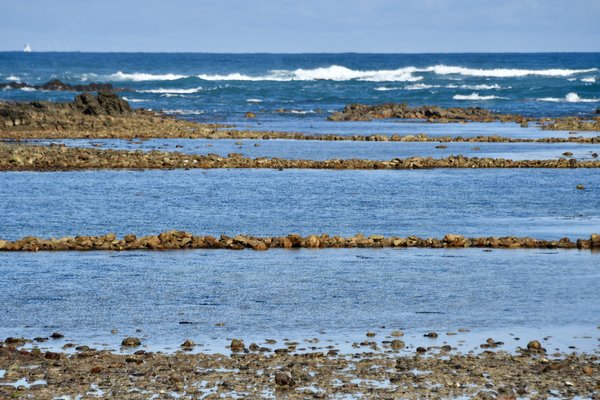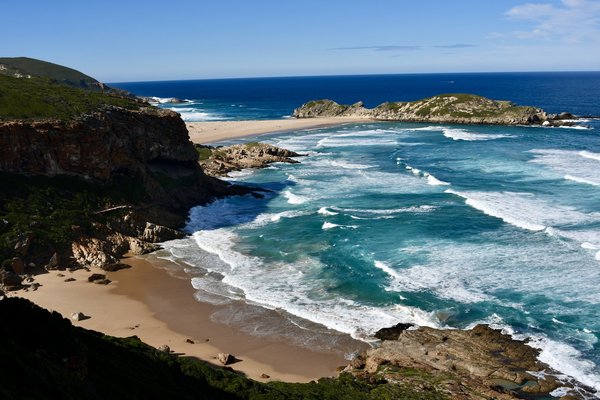South Africa
Cape Floral Region
The Cape Floral Region Protected Areas consist of 13 clusters covered with fynbos and known for their rich plant life.
They are located in the Mediterranean climate region of South Africa, Western Cape Province and the Eastern Cape Province. With the Cape Floral Region being of the six Floral Kingdoms of the world, the outstanding diversity, density and endemism of the flora are among the highest worldwide.
Community Perspective: The site comprises 13 locations, of which Table Mountain and the Kirstenbosch Gardens are the most accessible, as they lie in Cape Town. Bernard has given an overview of some other clusters that can be done self-driving. August/September is the best time to see the flowers.
Site Info
Official Information
- Full Name
- Cape Floral Region Protected Areas (ID: 1007)
- Country
- South Africa
- Status
-
Inscribed 2004
Site history
History of Cape Floral Region
- 2015: Extended
- 5 additional areas formerly in buffer zone added
- 2004: Inscribed
- Inscribed
- 2000: Requested by State Party to not be examined
- Postponement requested
- Type
- Natural
- Criteria
- ix
- x
Links
- UNESCO
- whc.unesco.org
- Official
-
- capenature.co.za — Swartberg Nature Reserve
- capenature.co.za — Boosmansbos Wilderness Area
- capenature.co.za — De Hoop Nature Reserve
- Related
-
- calflora.net — Article, photos and maps of the "Cape Floral Kingdom"
- en.wikipedia.org — Wikipedia
All Links
UNESCO.org
- whc.unesco.org — whc.unesco.org/
Official Website
- capenature.co.za — Swartberg Nature Reserve
- capenature.co.za — Boosmansbos Wilderness Area
- capenature.co.za — De Hoop Nature Reserve
- capenature.co.za — Groot Winterhoek
- capenature.co.za — Cederberg Wilderness Area
- sanbi.org — Kirstenbosch
- sanparks.org — Table Mountain National Park
Related Resources
- calflora.net — Article, photos and maps of the "Cape Floral Kingdom"
- en.wikipedia.org — Wikipedia
News Article
- April 18, 2021 edition.cnn.com — 'Out of control' fire breaks out in Cape Town's Table Mountain National Park
- March 4, 2015 nbcnews.com — A fire burns through indigeneous Fynbos vegetation on the Table Mountain National Park
- Dec. 22, 2009 iol.co.za — Row over ads on Table Mountain
Community Information
- Community Category
- Wildlife habitat: Flora
Travel Information
One million visitors or more
Recent Connections
-
Featured in the Go Jetters
Series 1: Episode 17: Table Mountain -
Botanical Gardens
Kirstenbosch National Botanical Garden … -
Pliocene
on the basis of unchanged landform sinc…
Connections of Cape Floral Region
- Individual People
-
-
Cecil John Rhodes
Includes Kirstenbosch Botanical Garden. "... purchased by Cecil John Rhodes in1895........ The land now occupied by the Kirstenbosch Gardens was bequeathed to the Nation by Cecil Rhodes who died in 1902." (Wiki). The Nomination File makes several references to the "Rhodes Will" in which he left a large portion of land on the slopes of Table Mountain to the nation. -
Charles Darwin
Darwin stayed June 2-18 1836. Made a 4 day trip east into the interior and crossed the inscribed area of the Boland mountain complex around Franschoek. Comments in his "Beagle Diaries" about Table mountain "... this great mass of horizontally stratified sandstone rises quite close behind the town to a height of 3500 feet; its the upper part forms an absolute wall, which often reaching into the region of the clouds. I should think so high a mountain not forming part of a platform & yet being composed of horizontal strata, must be a rare phenomenon." In his (separate) field notebook he commented on the slate formations on Lions Hill and Lions Rump (both in Cape Peninsular NP) where he climbed to collect specimens :- "He also traced the transition from slate into gneiss at the Lions Rump and decided that the foliation of the gneiss was of metamorphic origin and did not necessarily indicate the original sedimentary layering." -
Sir Francis Drake
In 1580 he described Table Mountain" as "A most stately thing and the fairest cape in the whole circumference of the globe"
-
- Geography
-
-
Atlantic Ocean
includes Cape Point -
Cape
Cape Peninsula National Park -
Located in a Capital City
Cape Town (legislative capital of South Africa) -
Peninsula
Contains Cape Peninsula NP
-
- Trivia
-
-
Built or owned by Dutch
The whole area, including for example Kirstenbosch National Botanical Garden "In 1660 a hedge of wild almond (Brabejum stellatifolium) and brambles was planted to form the boundary of the (Dutch) colony. Sections of this hedge, known as van Riebeeck's hedge, still exist in Kirstenbosch" -
Built or owned by British
Kirstenbosch Botanical garden -
Fatal Accidents or 'disasters'
Table Mountain - "... 10 to 20 fatalities on it a year"See www.google.com
-
Viewable from another WHS
Can be seen looking south across the bay from Robben Island -
One million visitors or more
more than 1,702,995 tourists visiting the park between December 2023 and January 2024 / Table Mountain Cableway got over 1 million visitors in 2015/2016See www.sanparks.org
-
- History
-
-
Discovered during building of a Railway
The De Hoop Nature Reserve is lesser known and studied in terms of natural settings, but a highlight is 51 km of pristine white beaches and dunes (Coastal WHS) -
VOC
Kirstenbosch Botanical Gardens . "Surrounded by manicured lawns and orderly garden beds is a straggling, tangled thicket of shrubs. As botanical specimens they are unremarkable but they are, in fact, the remains of a hedge planned in 1660. Jan van Riebeeck, the commander of the Dutch East India Company, commandeered a group of French shipwreck refugees, who had been en route for Madagascar to plant the hedge. Consisting of wild almond trees and other thorny shrubs it was designed to try to keep the local indigenous people (whose livestock routes had been disrupted by the company's newly established Cape Town settlement) out and stop them from raiding the company's cattle."
-
- Ecology
-
-
Penguins
Jackass (Cape Peninsula) -
Table Mountain
See en.wikipedia.org
-
Seals
fur seal -
Flamingos
At De Hoop Nature Reserve: greater flamingo and lesser flamingoSee ebird.org
-
Critically endangered fauna species
Table Mountain Ghost Frog - The whole of this species' range is incorporated in the Table Mountain National Park -
Ratites
common ostrich
-
- Damaged
-
-
Affected by Climate Change
Examples where climate change has facilitated the spread of invasive alien species include Cape Floral Region Protected Areas (South Africa) .. Climate change, which is stimulating the growth of invasive woody plants, as well as increased drying has increased fire intensity and frequency. (IUCN outlook 2020) Alien plants pose the most severe threat to the continued existence of Fynbos ecosystems.
-
- World Heritage Process
-
-
Natural sites filling gaps cited by IUCN
Cape Floral habitat -
Incorrect UNESCO 'Number of locations'
No indication of a separate serial ID for the locations that are shown on the (old) map. Extension from 8 to 13 sites in 2015 not acknowledged. -
Extended
2015: 5 additional areas formerly in buffer zone added
-
- Human Activity
-
-
Canopy Walkways
The 'boomslang' at Kirstenbosch: This walkway is 130 m long, narrow and slender, with a few wider view-point areas, and lightly snakes its way through the canopy, in a discreet, almost invisible way. The walkway is crescent-shaped and takes advantage of the sloping ground; it touches the forest floor in two places, and raises visitors to 12 m above ground. It is more than just a traditional boardwalk – like a snake, it winds and dips."See www.sanbi.org
-
- Constructions
-
-
Lighthouses
Cape Point lighthouse, Old and New. The light of the new lighthouse is the most powerful on the South African coast. -
Suspended cable cars
From Cape Town to Table Mountain / 1929 / 1200m, 5 mins / uses rotairs: "The round shape of the cable car offers excellent aerodynamics in Cape Town’s famously strong South Easter wind, which enables us to operate in windier weather conditions than our previous cars."
-
- WHS on Other Lists
-
-
Biodiversity hotspot
Cape Floristic Region -
Ramsar Wetlands
De Hoop Vlei + False Bay Nature Reserve -
World Biosphere Reserves
Cape Winelands (2007) -
WWF Global 200
Terrestrial, Mediterranean Forests, Woodlands and Scrub: (118) Fynbos - South AfricaSee web.archive.org
-
Centres of Plant Diversity
Af53 Cape Floristic Region - "The Cape Floral Region is one of the richest areas for plants when compared to any similar sized area in the world. It represents less than 0.5% of the area of Africa but is home to nearly 20% of the continent’s flora." -
Alliance for Zero Extinction
Table Mountain: Heleophryne rosei (Table Mountain Ghost Frog) -
New 7 Wonders of Nature
Table Mountain
-
- Timeline
-
-
Pliocene
on the basis of unchanged landform since then, period of most speciation and establishment of general climate patterns as of today despite subsequent ups/downs: "While the radiation of Cape clades occurred throughout the late Cenozoic, speciation was most prolific during the Pliocene."
-
- Science and Technology
-
-
Botanical Gardens
Kirstenbosch National Botanical Garden (only Botanic Garden in the world which is included within a natural World Heritage site)
-
- Literature & Film
-
-
Featured in the Go Jetters
Series 1: Episode 17: Table Mountain
-
News
- edition.cnn.com 04/18/2021
- 'Out of control' fire breaks out i…
- nbcnews.com 03/04/2015
- A fire burns through indigeneous F…
- iol.co.za 12/22/2009
- Row over ads on Table Mountain
Recent Visitors
Visitors of Cape Floral Region
- AC
- Adrian
- Adrian Turtschi
- alex
- Alexander Barabanov
- Alexander Lehmann
- alicemears
- Ali Zingstra
- ALS
- A. Mehmet Haksever
- Ammon Watkins
- amychemu
- anthonybonbon
- Ask Gudmundsen
- Aspasia
- Atila Ege
- Badwater
- BaziFettehenne
- BenReeve
- Bernard Joseph Esposo Guerrero
- Bill Maurmann
- Bodil Ankerly
- Bram de Bruin
- brornt
- Can SARICA
- Carlo Medina
- Carlo Sarion
- Chinmaya
- chiuliqi
- Christoph
- Cirene Moraes
- Claire Bradshaw
- Colossus
- Corinne Vail
- Crinion
- Cristina Erba
- Csaba Nováczky
- ctravel
- Cyberczar
- Dani Cyr
- Daniela Hohmann
- Daniel Chazad
- Daniel Gabi
- Danny L
- Deffra
- Delphine Delaunay
- Dennis Nicklaus
- disnsam
- Dorejd
- Elaine McArdle
- Elf21
- Ellen Nielsen
- Els Slots
- Erfe91
- Fan Yibo
- Felicité
- Femke Roos
- Fernweh
- finsbury_jo
- FS
- Gabbro
- Gary Arndt
- Geert Luiken
- Gernot
- Gilles
- Hammeel
- HaraldOest
- Harald T.
- Harry Mitsidis
- Iain Jackson
- Ingrid
- IreneKD
- Ivan
- James F
- janameerman
- Janos
- Jarrod_Byham
- Javier
- Javier Coro
- Jay T
- Jean Lecaillon
- Jeanne OGrady
- Jens
- JL
- João Aender
- Jonoprout
- JoshHad
- Joyce van Soest
- KarenBMoore
- Karito Vies
- Ken DJ
- Knut
- Krijn
- Kurt Lauer
- Lars Bogstad
- leroykstlj
- Liamps91
- Linz
- Little Lauren Travels
- Loic Pedras
- Ludvan
- Luis Filipe Gaspar
- lynnz317@aol.com
- Maja
- Malgorzata Kopczynska
- Mariam
- Marlies van Wolfswinkel
- Martin
- maryhattie
- Matthewsharris
- Michael Ayers
- Michael Novins
- michaelsballard
- Michael Turtle
- Mihai Dascalu
- Mikko
- MMM
- Monica Tasciotti
- Morodhi
- Mtlmr
- Naim Y
- Neil McPaul
- Niall Sclater
- Nihal Ege
- Olli-Pekka Turunen
- Patrik_globe
- Paul Schofield
- PeterA
- PeterH
- Philipp Leu
- Philipp Peterer
- Pink Bunny
- pressdm
- Priyaranjan Mohapatra
- Rachel Perkins
- Ralf Regele
- Randi Thomsen
- reddargon
- Reiseblitz
- Reisedachs
- Reza
- Rick Ohm
- rivr
- Roger Ourset
- Sandmann15
- Sandra!
- Sergio Arjona
- Shannon O'Donnell
- shoaibmnagi
- Shombob
- sime147
- Slavi
- Solivagant
- Stanislaw Warwas
- stephanvermeulen
- Sutul
- Svein Elias
- Szabolcs Mosonyi
- Szucs Tamas
- Tamara Ratz
- Thomas Buechler
- Thomas Harold Watson
- Thomas van der Walt
- Tim Allen
- Timothy C Easton
- tony0001
- Toxicologist
- travellingcat
- Van Hung
- Vernon Prieto
- voyager
- Walter
- wantrain.
- Waxwing
- Wo_ko
- Zoë Sheng
- Zsuzsanna Forray
- Александар Стојиљковић
Community Reviews
Show full reviews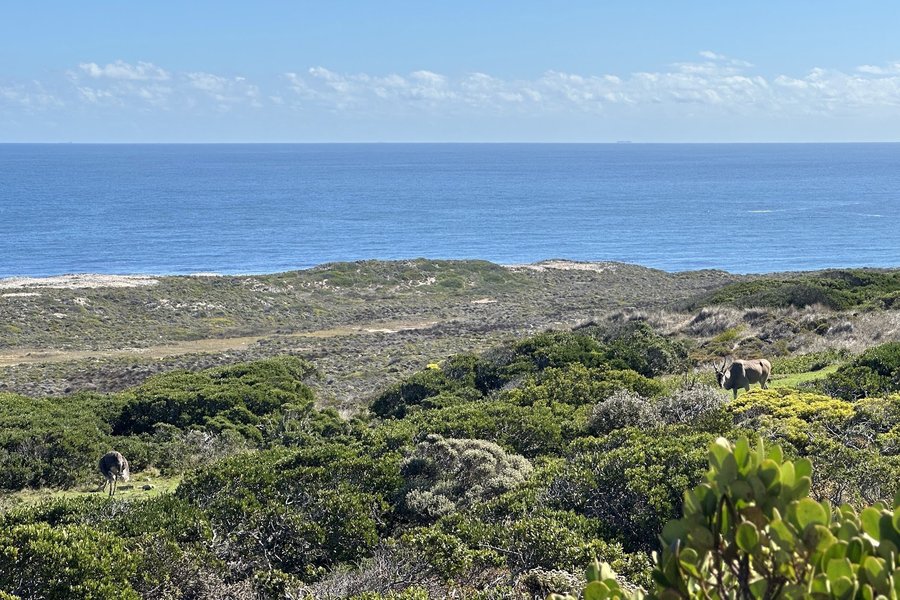
I visited Cape Town during April of 2025, which is near the summer of the Southern Hemisphere. I created a Youtube video on my channel for a more interactive way of reviewing.https://www.youtube.com/watch?v=a68wGupg0lM&t=9s&ab_channel=MscBonbonFor those that want a quick but fulfiling tour near Cape Town, I recommended visiting Kirstenbosch gardens. Very easy to uber to here from anywhere in Cape Town. I highly recommend joining one of their free guided tours - you just meet them at the start of the entrance, from Mondays to Fridays at 10h00, 11h00 and 14h00.. The guide is very knowledgeable and would introduce you to a variety of flowers and plants. You can also join day tours to visit the Cape Point National Park, which I had to because I did not have the means to rent a car. The day tour takes a full day, but you have the chance to hike around the cape of good hope (which on a good day is very beautiful). The picture you see here there's the Greater Kudu and the ostrich. The day tour also includes seals and penguins seeing which makes the experience even better.
Keep reading 0 comments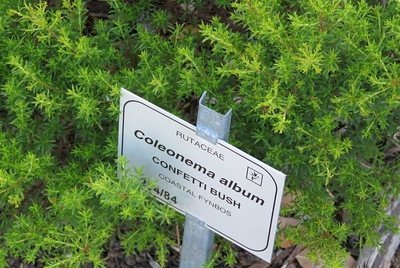
The Cape Floral Region is one of the few WHS solely focused on flora. ‘Fynbos’ is the key subject here: a diverse shrubland and heathland vegetation with many endemic species. It comes for example in the variation of ‘rooibos’, which is used for the eponymous tea. Although plants aren’t my specific area of interest, I managed to visit Kirstenbosch Botanic Gardens and the Table Mountain National Park during my 4 days in Cape Town. These cover only 1 of the 13 inscribed clusters – the other 12 are located in the Western and Eastern Cape Provinces.
My explorations started at Kirstenbosch gardens. I was staying at a Bed&Breakfast in Klaassens Road, next to Gate no. 3 of the gardens. This whole area is incredibly lush – and wealthy. Properties sell easily for over 1 million EUR. Entering Kirstenbosch via this upper gate leads you directly to the fynbos and the proteas, both almost only to be found in the Cape Floral Region. With Table Mountain directly in the background, it’s all very pleasing to the eye. The lower part, near main entrance no. 1, is a bit more like a landscape garden and hosted lots of picnickers when I was visiting on a Saturday afternoon.
We’ve discussed before on this website whether it is more important to preserve an iconic and large fauna species such as the giant panda or the mountain gorilla, than for example a mouse or even an ant. This also applies to the flora: …
Keep reading 0 comments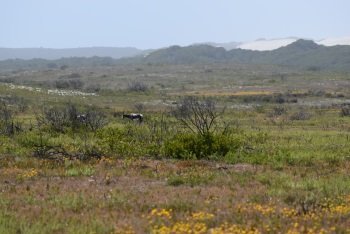
A large part of the satisfaction I got in ticking this site off stems from the fact that not only did I see the three nature reserves that form the Table Mountain National Park, but, more importantly, I was able to pay proper visits to seven out of the eight protected areas that make up the inscribed serial property (I missed out Groot Winterhoek).
The Cape floral region is a truly unique ecosystem of the fynbos. Kirstenbosch provides a bird's eyeview of the different fynbos that thrive across different habitats, and it would be best to start one's travel here (I, however, started with the Baviaanskloof moving towards Table Mountain then going up to the Cederberg, making the botalnical garden my last stop).
Here are some of the highlights: (a) the beautiful mountain scenery provided by the Swartberg Pass and the Merringspoort Pass. Both connect the Little Karoo and the Great Karoo, and are great feats of mountain engineering; (b) the rock formations of the Cederberg and its good collection of ancient Bushmen paintings (we took the Sevilla rock art trail); (c) the coastal white sand dunes and game drive of De Hoop; (d) views of Strand, Stellenbosch, Franchshoek and the rest fo the Boland area/wine region on top of the Holland-Hottentots mountains; (d) scenic coastal drives by the Cape of Good Hope and Kogelberg biosphere reserve -- very enjoyable!; and (e) imposing beauty of Table Mountain as seen in and around Cape Town - a true world-class landmark! Also …
Keep reading 0 comments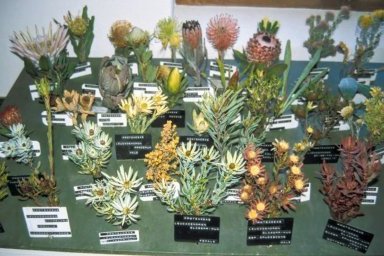
The WHS additions in July 2004 were a mixed lot in my opinion but 1 stood out for me –the “Cape Floral Region Protected Areas”. Alongside the usual litany of uninspiring/mediocre European sites (Liverpool, Muskauer and Andorra Valley?) and shady political dealings (The Koguryo China/N Korea “compromise”!) here was a site whose selection showed real imagination. A site of genuine uniqueness and justifiable preservation. Yet it took UNESCO from the year 2000 with 2 “deferrals” to get this nomination accepted! So typical of bureaucrats to concentrate on “Dotting the I’s” rather than on the value of the concept!
To quote
“Although the smallest of the world’s 6 principle floristic regions and in a temperate zone it has a degree of species richness comparable with most tropical hotspots. In less than .5% of the area of Africa it has nearly 20% of its flora and in less than 4% of the area of Southern Africa it has nearly 44% of the sub-continental flora of 20367 species. Nearly 69% of its vascular species do not occur naturally anywhere else in the world”
From within this “kingdom” 8 areas have been inscribed stretching as far as 450kms from the city of Capetown. The most famous and easily accessible is that of the Cape Peninsular itself although this is the second smallest - you will go through it if you go down to the Cape of Good Hope (as we did).
To quote again “The distinctive flora which contains 80% …
Keep reading 0 comments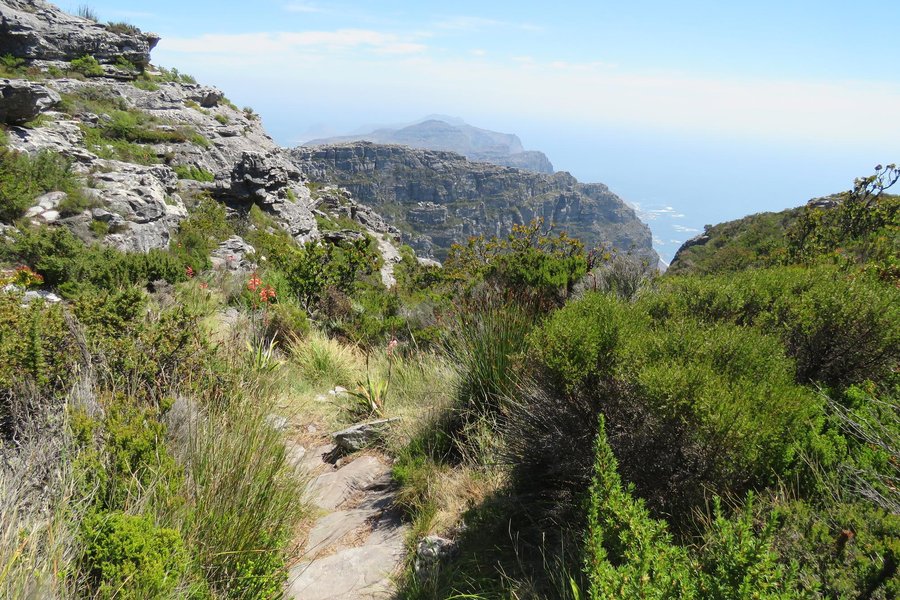
Situated with the spectacular Cape Floral Kingdom, Table Mountain is a famous landmark and icon for all those that live in the Cape. Being from Johannesburg I had never actually been up to the top of Table Mountain and always wanted to. When eventually including Cape Town in our holiday it was decided that a visit to the Cape Floral Kingdom and the top of Table Mountain was a definite.
Even though it was rather hot, we knew it would be freezing up on the mountain. After clothing ourselves with at least 3 layers of clothes and packing our picnic basket, we headed our way to the famed Table Mountain. We boarded the Cableway which would transport us up to the top of the mountain. The view was spectacular! The cable car’s rotating floor enabled us to see a 360 degree view of the entire city and floral wonderland below! The scenery was absolutely exquisite.
When we arrived at the top of the mountain, I could not wait to see the view. The entire mountain boasts walkways and seating positions from which the city can be admired. On the one side we could see Camps Bay and watch how the sun caused to entire sea to shimmer. On the other side we could appreciate Cape Town’s sheer expanse and could even spot Robben Island! It is so quiet up on the mountain. It is almost as if the world stops when you admire the view up here! Everything else stops …
Keep reading 0 comments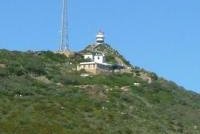
Visiting Cape Town a collector can visit 2 sites. First is Robben island and second is Cape Floral Region.
This site consists of six (?) parts which are geographicaly in whole region of Western Cape.
So I visited only the "Kirstenbosch Botanical Garden" and Cape Point National park. The whole region is a housing of Fynbos ("fine bush") which is rare only for this part of world. The natural location is very nice and I enjoyed my stay there, especialy on Cape Point even it is very windy. Just be prepared that you will need a whole day for such a trip.
Pic: Lighthouse on Cape Point surrounded by Fynbos
Keep reading 0 comments
